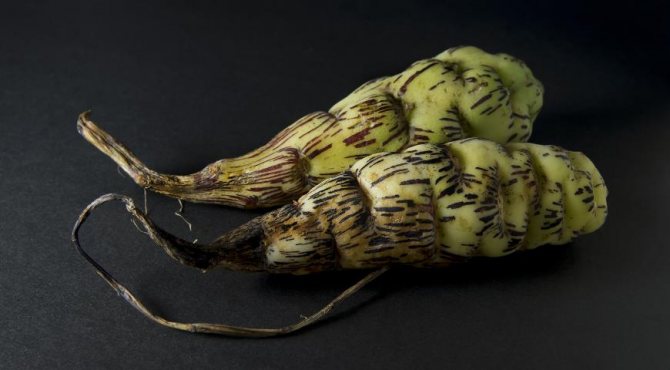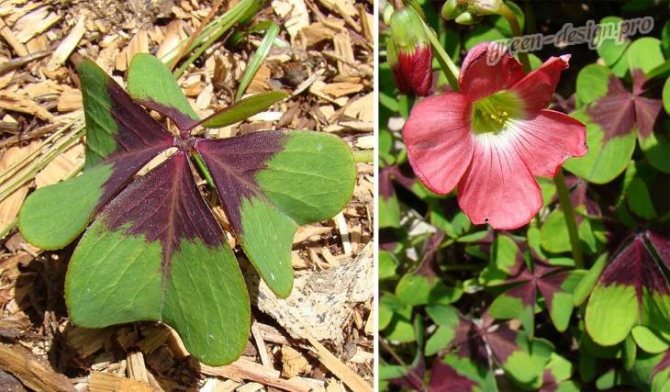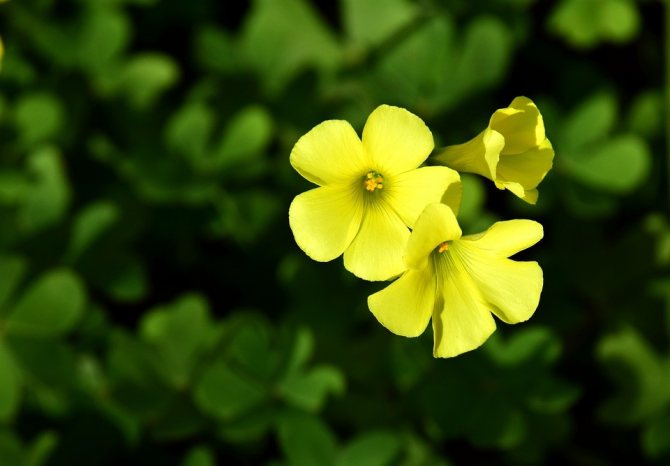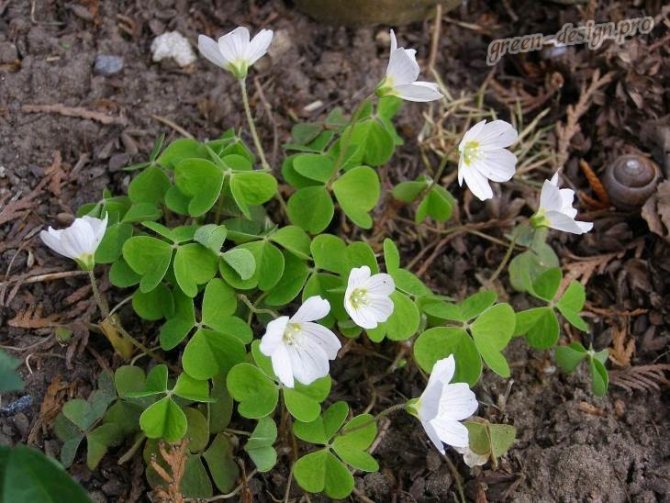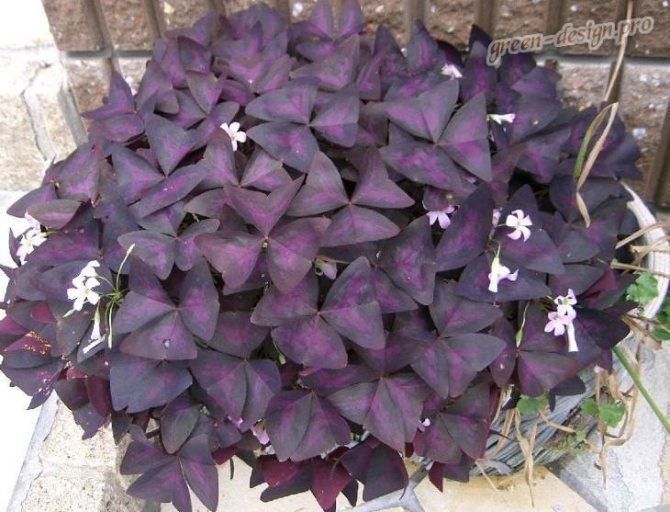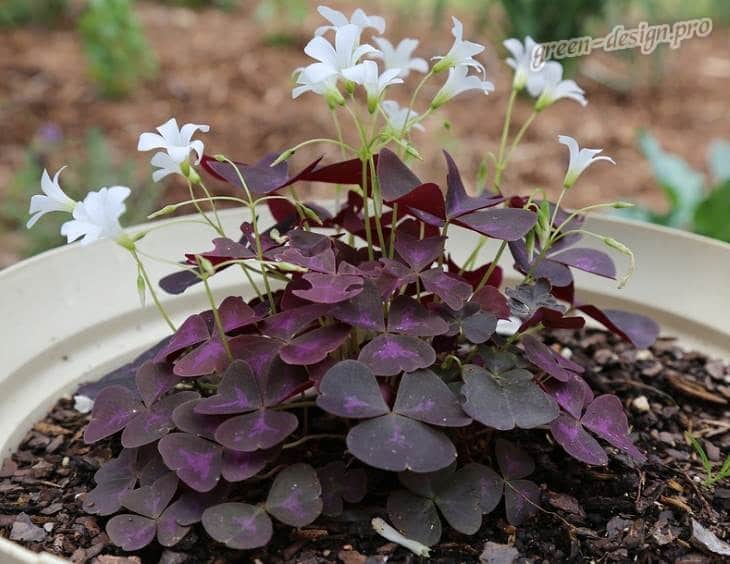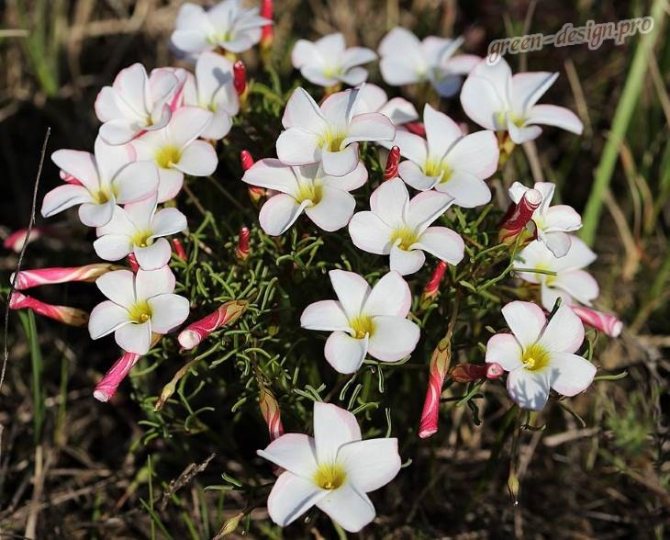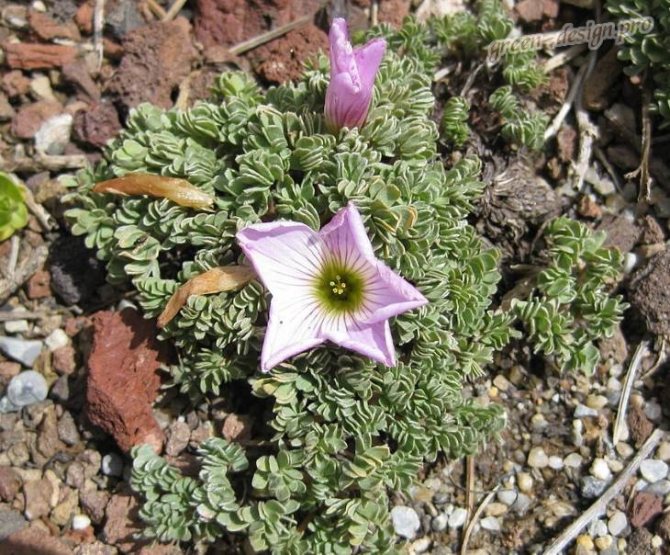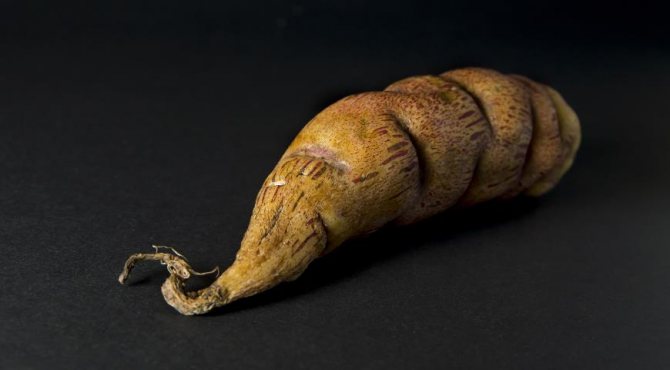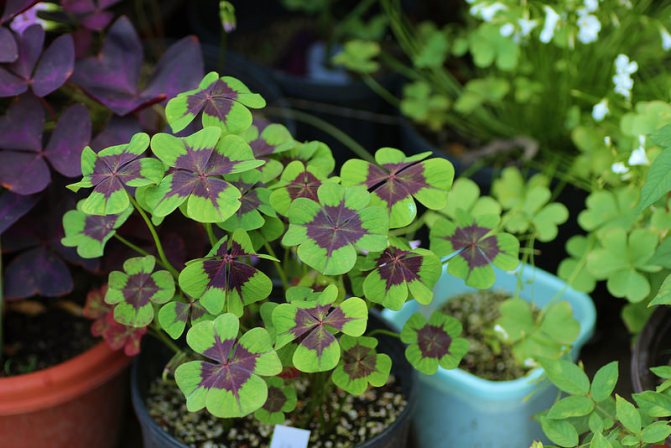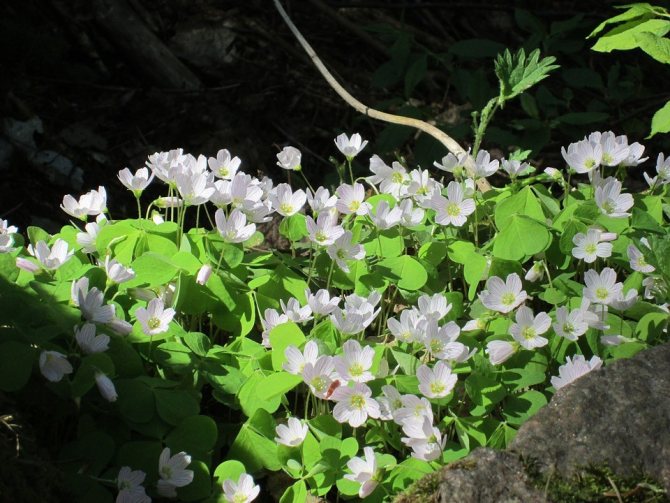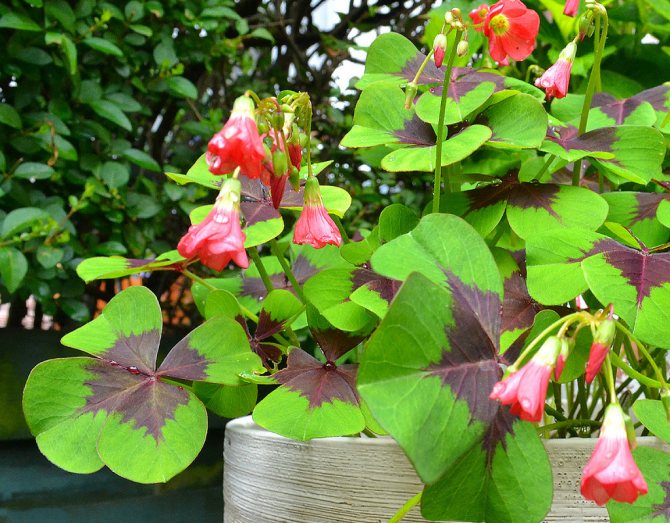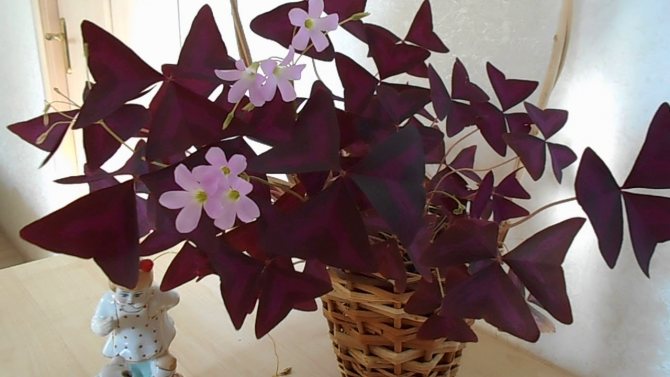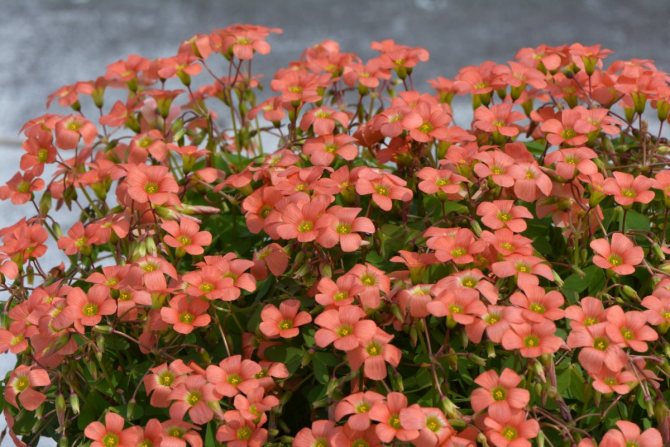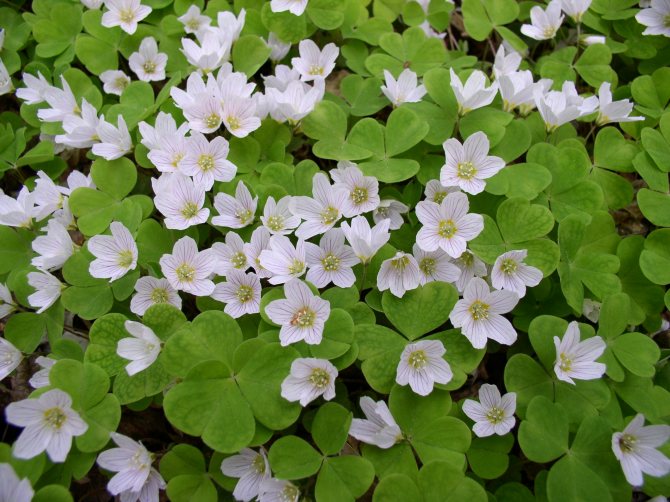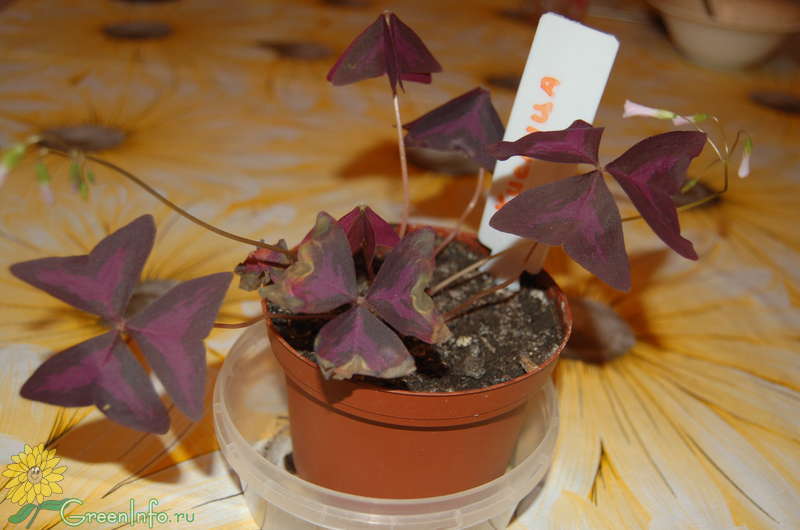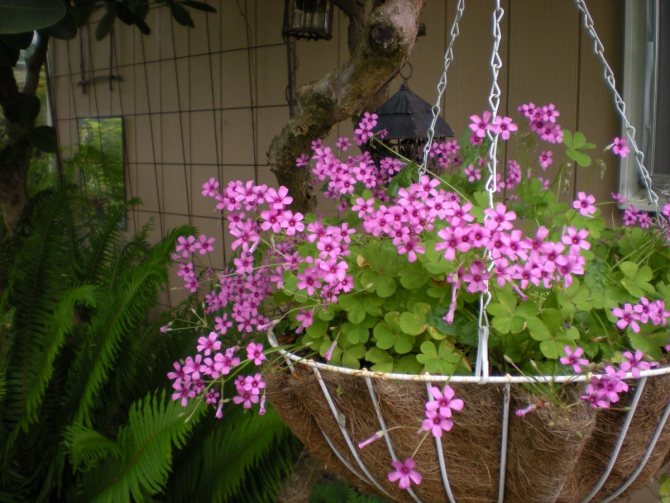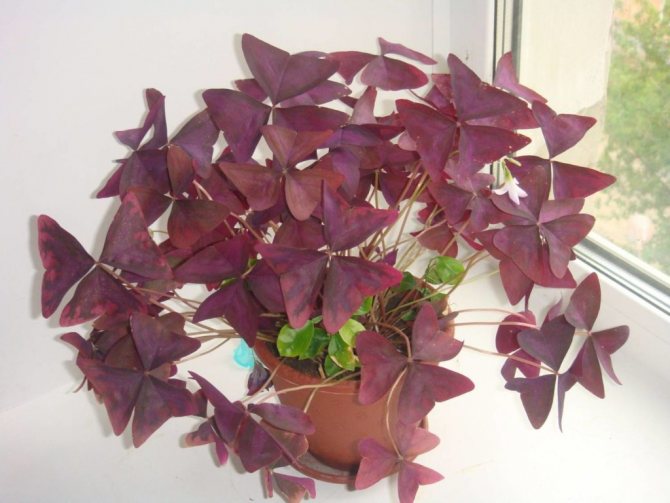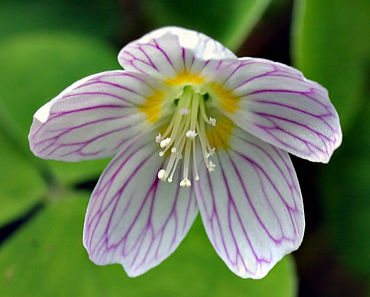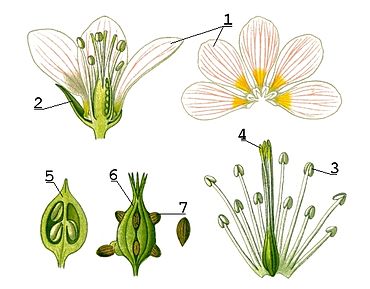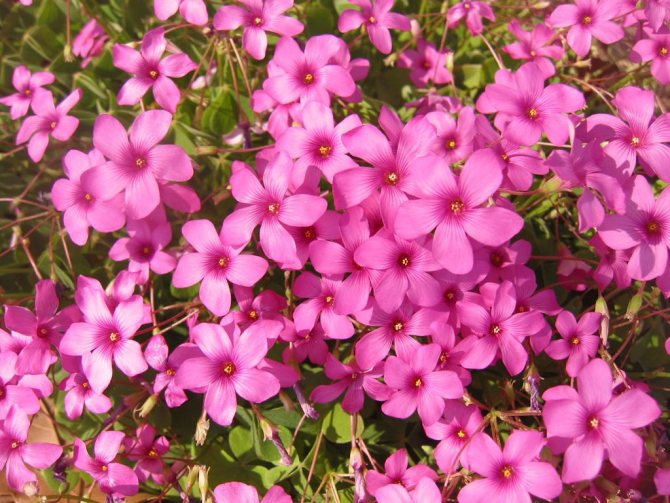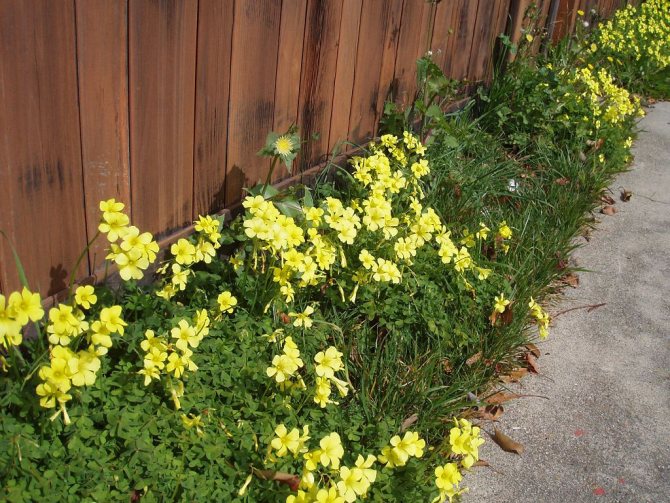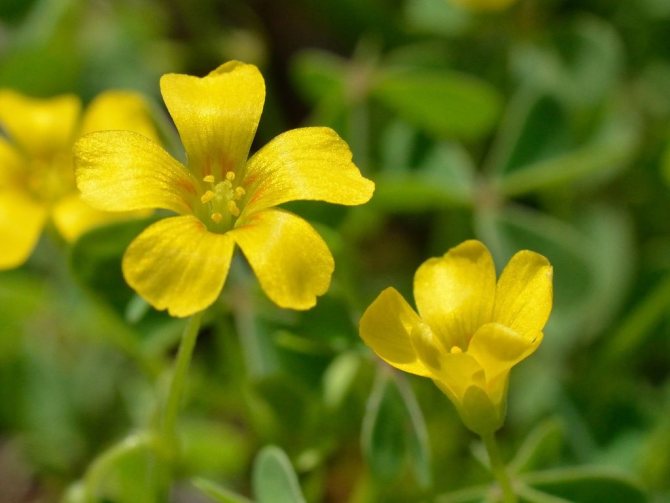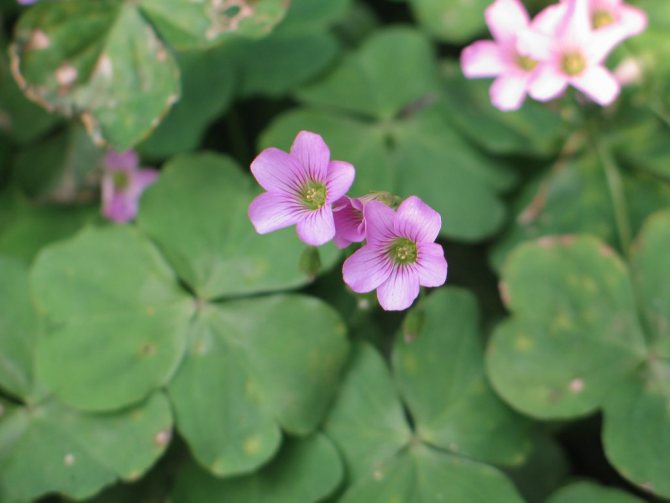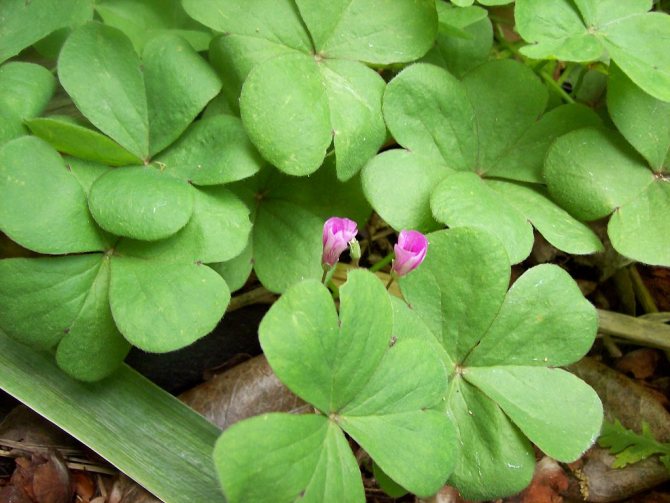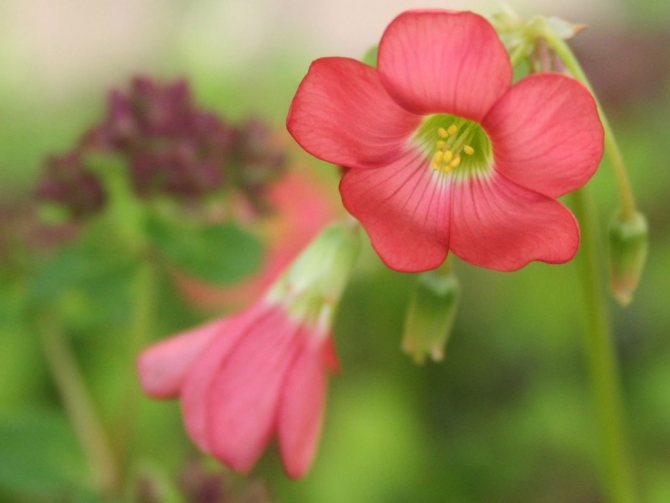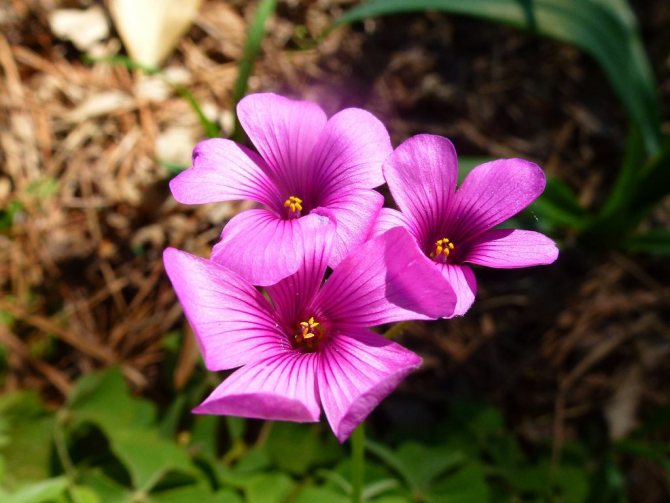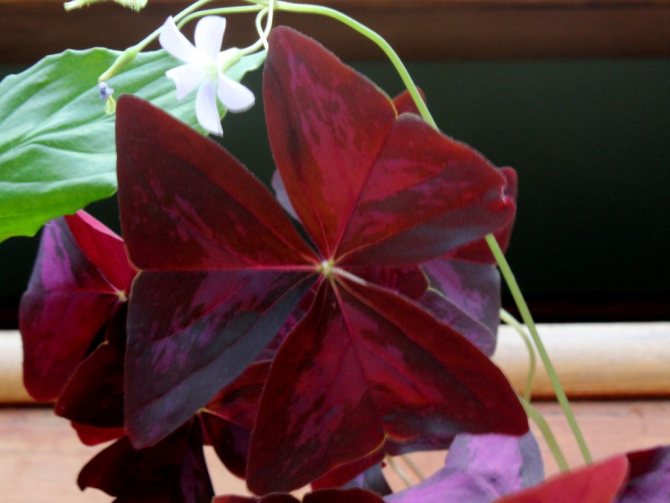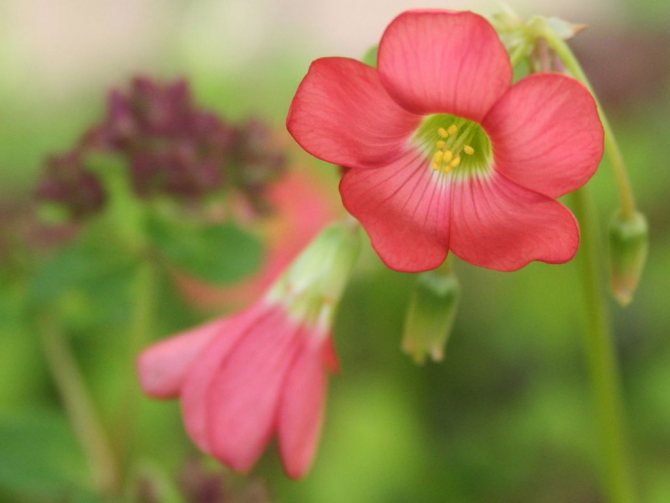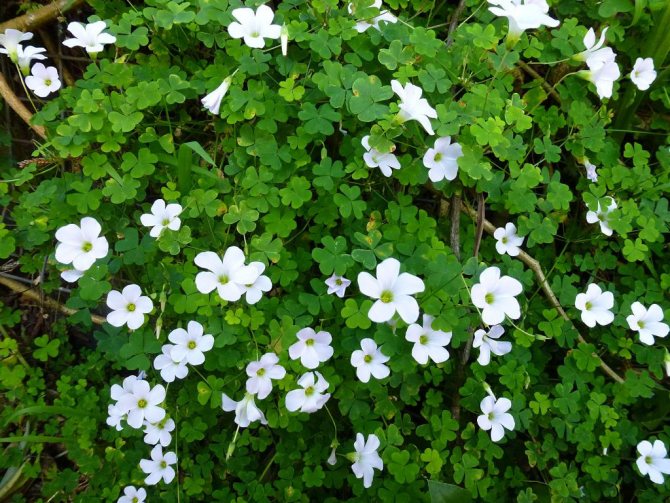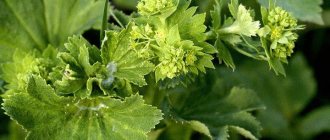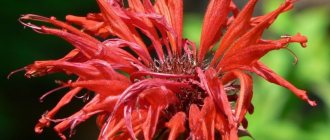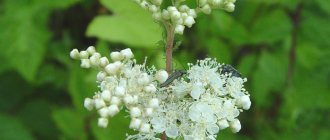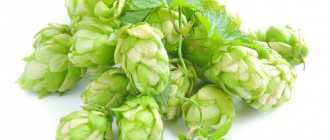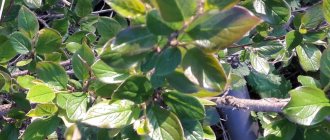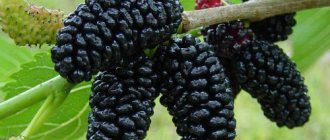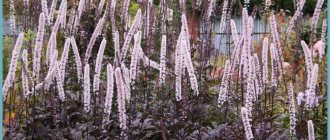- How to grow sour tuberous
- How to care for sour tuberous
- How to cook tuberous sour lily
Outwardly, the plant is inconspicuous, and its main value is underground. Oxalis tuberosa tubers contain a lot of starch - up to 25%. They are covered with fleshy scales, crispy flesh and a pungent taste. According to the level of oxalic acid content, the varieties are divided into two groups: sour varieties and sweet ones. And the color of the tubers are white, yellow, pink, bright red and purple.
Interestingly, tuberous oxalis is not found in the wild. And it is impossible to propagate it by seeds - the flowers are sterile. It is bred exclusively with tubers.
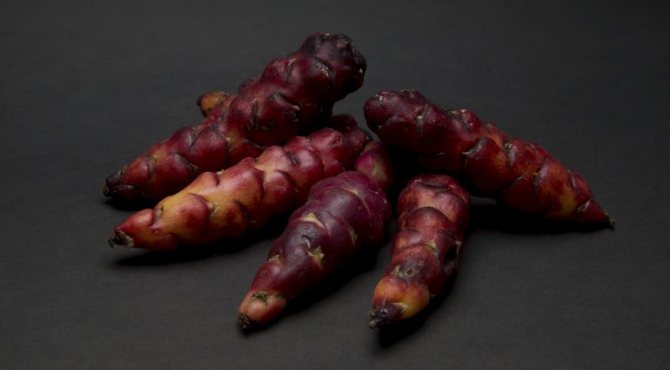
Use of the beneficial properties of acid in folk medicine
The medicinal properties of sour cherry have found application in a number of recipes recommended by traditional healers to eliminate various diseases.
- At elevated temperatures, acute respiratory viral infections, flu, an herbal medicine is used: 2 tbsp. l. pour 0.37 liters of hot milk, simmer for half an hour on a steam bath. Drink 0.10 liters three times a day, half an hour before meals.


- For the treatment of atherosclerosis, a remedy helps: 1 tbsp. l. place raw materials in 0.40 liters of water and hold for 15 minutes in a water bath. Filter and consume three times a day, half a glass with meals.
- For jade, use the recipe: 1 tsp steam raw materials 0.25 liters of boiling water, wait 2 hours. Consume 1 tbsp. l. up to 4 times a day for 21 days. After an incident of 10 days, conduct another course.
- To get rid of worms, use hare cabbage juice: Wash freshly picked leaves, scald with boiling water, grind with a meat grinder. Squeeze juice from the obtained raw materials. Dilute it in half with water, set on fire and heat to a boil. Consume three times a day for 1 tbsp. l., preferably with 1 tsp. honey. The procedures should be carried out for 7 days. After a month, repeat the course.
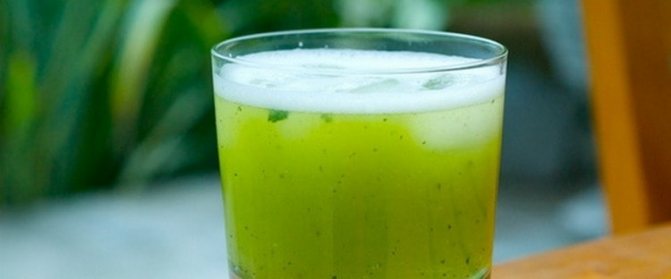

- When stomatitis appears, you can rinse your mouth with freshly squeezed sour juice diluted with water 1:10... Or prepare a tincture: pour 50 g of dried leaves with 0.50 liters of vodka or alcohol, leave for 10 days in the dark. 2 tbsp. l. dilute the resulting product in 0.10 liters of water and rinse your mouth four times a day.
- In case of poisoning, it is recommended to take an infusion: 1 tbsp. l. steamed fresh leaves 0.20 liters of boiling water in a thermos. After an hour, you can start treatment - drink 50 ml in small sips at intervals of 2 hours.
- If there are signs of diarrhea, you can use sour juiceby mixing 1 tsp. with the same amount of honey. Take up to 3 times a day.


- Purulent wounds heal much fasterif you apply a fresh leaf of cuckoo clover to them.
- For diseases affecting the liver, tincture is very useful: Pour 100 g of dried herbs with 0.10 l of alcohol (40%), leave in a dark place for 5 days. Dosage: 1 tbsp. l. before meals three times a day.
- For the treatment of exudative diathesis, a decoction of hare cabbage is used: Steam 20 g of dry raw materials in 0.20 liters of boiling water, simmer in a water bath for 5 minutes. Make lotions with this drug twice a day for 15 minutes. Repeat for 10 days. To enhance the effect, the broth can be taken orally: a quarter of a glass three times a day.
- With painful and excessively heavy menstruation, with fainting, heartburn it is recommended to drink 1 tbsp before meals. l. infusion: 1 tbsp. l.brew herbs 0.20 liters of boiling water, let it brew for 2 hours.
- For stomach cancer, an infusion is shown: 1 tbsp. l. place raw materials in 0.40 liters of hot water and darken under a lid in a water bath for 15 minutes. Consume 0.10 liters with meals. At an early stage of the disease, green tea is excellent, to which you need to add 5 drops of leaf juice.
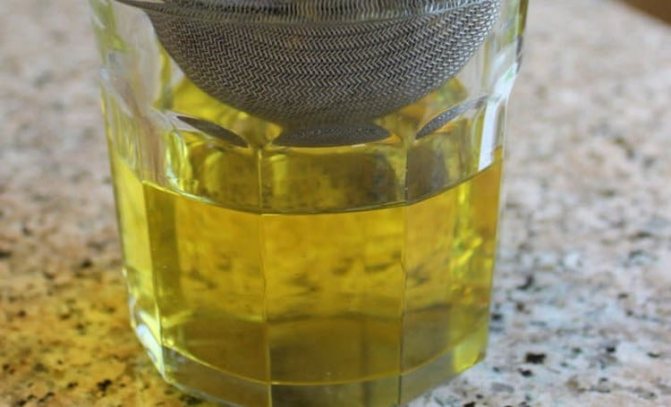

Garden forms
In the gardens there are carob, pink, volcanic sour. Indoor conditions:
- four-leafed with a red corner on green leaves;
- triangular with burgundy leaves and pink-purple flowers;
- variegated with white flowers with red stripes and a yellow bottom corner.
Popular oxalis triangular, or purple (false) shamrock, originally from Brazil. Enchants with lilac flowers and beet color (to black) of the leaves-triangles with a dark border around the edges and c.
Its more cold-resistant subspecies is also attractive - triangular moth oxalis, or Regnella, nicknamed "Madame Butterfly".
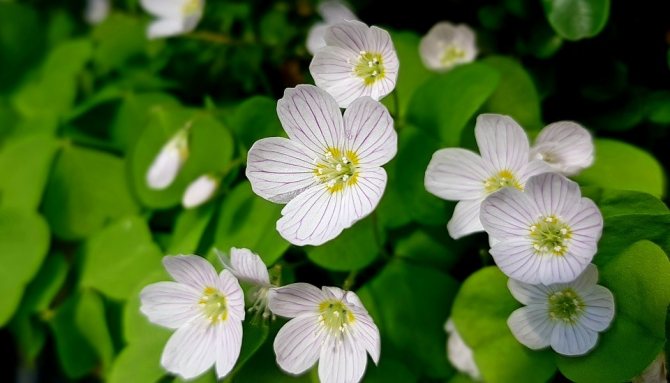

Contraindications for use
The use of products based on hare cabbage has very specific contraindications, to skimp on which means to expose your health to real danger.
Oxalis is prohibited:
- with problems with blood clotting;
- with gouty arthritis;
- with a tendency to seizures;
- with cirrhosis;
- with violations of the kidneys and liver.
A high concentration of oxalic acid in a plant can adversely affect the functioning of the kidneys, therefore, special attention should be paid to the dosage and timing of the use of drugs with acidic.
Planting currants in spring
In the spring, red currants need to be planted before the start of active sap flow. Planting seedlings should be done in a hole 40 cm deep and 50 cm in diameter, this will make it possible to place the root system well. As a top dressing, you can use compost or manure in the amount of ten liters with the addition of fifty grams of superphosphate, the same amount of potassium chloride and a little wood ash. In the middle of the country, the soil and climate are excellent for planting and growing red currants. Therefore, the shrub will not cause much trouble for gardeners.
How to grow sour cherry
This plant can be grown in a garden or at home on a windowsill. It can be propagated by seeds, with the help of leaves or by separating the tubers from the root. Soil preparation is reduced to mixing turfy soil, foliage, humus and sand in approximately equal proportions. A well-lit place or partial shade is suitable for the plant. Direct sunlight can burn the leaves, and it will grow poorly in deep shade. Moderate watering is recommended.
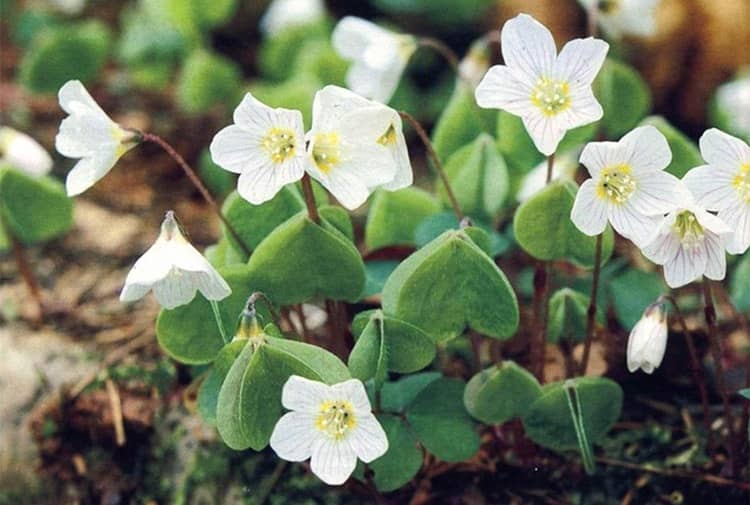

Using oxalis in the garden
The decorativeness of this small plant allows it to be used everywhere in the design of a garden plot. Kislitsa is appropriate as a curb planting, the foreground of a flower garden, can be used for a single planting or create curly thickets that imitate lawns.
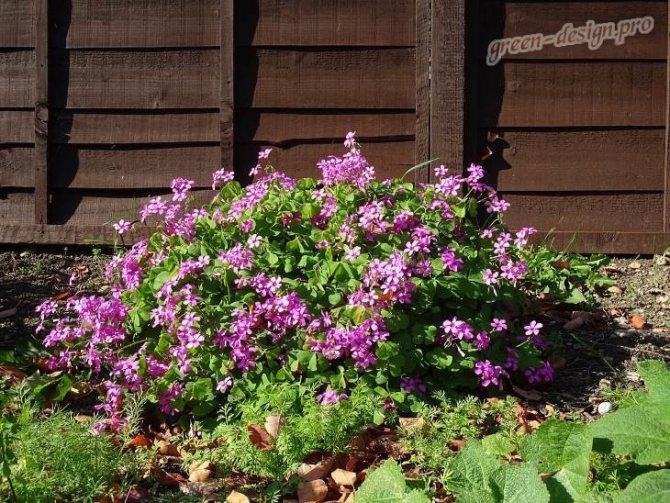

The varieties that are recommended for room planting will be a great addition to the recreation area, they decorate the walls of houses in hanging pots or decorate the porch.
It is customary to give this plant in pots for the holidays, as it is associated with the wish of well-being, both family happiness and financial success. He is turned on in order to gain protection from the evil eye, strife in the house.
In modern gardening, oxalis has rightfully taken its well-deserved place among the exquisite plants that can decorate the most unsightly area and give admiring glances to guests.
Procurement and storage
The peak concentration of nutrients in the plant occurs during the flowering period, then they are engaged in harvesting it - this is May-June. The procedure is standard - the aerial part of the grass is collected and dried in the shade or in a dryer (at a temperature not exceeding 40 ° C). The most suitable storage conditions are in cardboard or wooden boxes.You can store it for no more than a year.
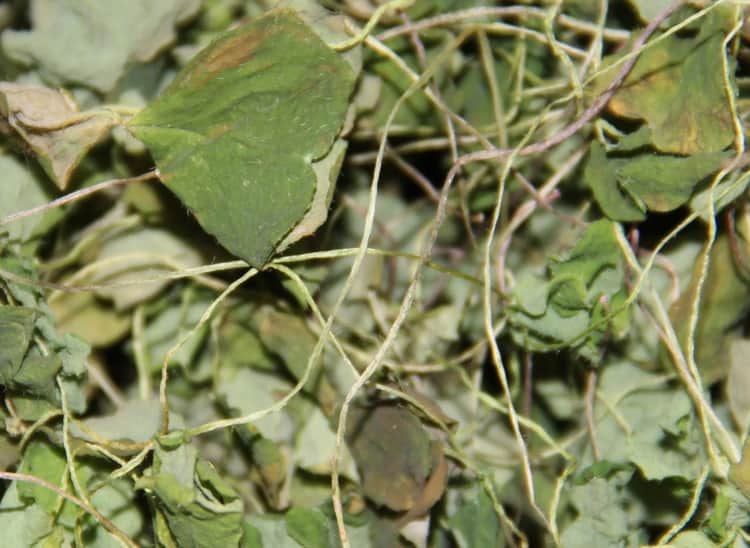

The root of the plant is also harvested. It is dug up in the fall, cleaned of the earth, cut into pieces and dried, laid out in a ventilated room.
Traditional medicine is renowned for its many powerful recipes that use a wide variety of ingredients - herbs that grow everywhere, and exotic specimens. To help the body, you only need to scrupulously follow the advice based on centuries of experience. We propose to study an incredibly wide range of medicinal properties of calendula, which is often simply called "marigolds", a unique combination of medicinal substances in the well-known Kalanchoe plant, as well as ways to use cocoa butter with health benefits.
Dear readers, tell us about your own experience of using the beneficial properties of plants for the treatment of various diseases, including the use of drugs, which include the oxalis described in this article... Perhaps you own other recipes that are not covered in the proposed material? We invite you to dialogue - maybe someone desperately needs your recipes and experience.
Watering
Timely watering is considered the key to a rich harvest. Thanks to its developed root system, oxalis is drought-resistant. Lack of water primarily affects the growth, development and fruiting of the plant.
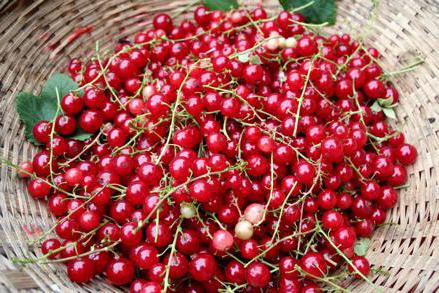

Therefore, during the period of growth and ripening of berries, regular moistening is necessary, which allows the soil to be saturated with moisture 50–60 cm deep. One bush requires about two buckets of water, which is poured into grooves dug at a distance of about 30 cm from the plant.
Taxonomy
View Oxalis ordinary
belongs to the genus Kislitsa (
Oxalis
) of the acid family (
Oxalidaceae
) of the order Acid-colored (
Oxalidales
).
| 5 more families (according to the APG II System) | about 800 more species | ||||||||||||
| order Acid flowers | genus Kislitsa | ||||||||||||
| Department Flowering, or Angiosperms | family Acidic | view Oxalis ordinary | |||||||||||
| 44 more orders of flowering plants (according to the APG II System) | 4 more genera (according to the APG II System) | ||||||||||||
|
| |||||||||
| From left to right. General form. Sheet. Flower. Flower scheme. Fetus. | ||||||||||
Pruning red currant bushes
When growing a shrub, it is important to know how to trim the currants correctly. There is formative and sanitary pruning. Cut red currants early in the fall and after harvest.
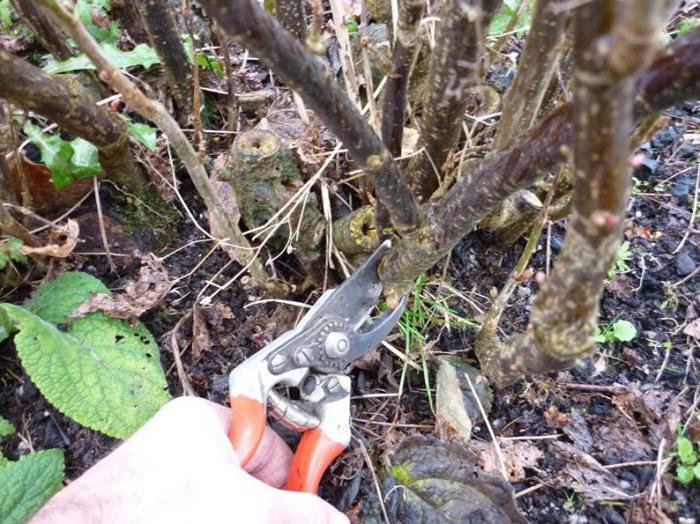

They remove old, broken, diseased branches and extra zero shoots. Sanitary pruning can be done in the spring. You cannot cut off the tops of branches where there are a large number of berry branches. A well-formed plant has approximately twenty branches.
Competent culture transplant
Adult sour cherry bushes require transplanting every three years, and a young developing plant - every year.
- The transplant should always start with the choice of capacity. The sour pot needs a spacious one, 3-4 cm wider than the previous one, for the possibility of planting several bulbs or tubers in it at once. Thus, you can regulate the degree of splendor of the future bush. Ceramic pots are considered ideal for containing oxalis, they are environmentally friendly, perfectly breathable and evaporate moisture.


It will be more convenient for acid to breed in a wide pot
- A drainage layer is poured onto the bottom of the container to drain excess moisture into the pallet.
The easiest way is to use the available expanded clay balls to wick moisture out of the flower pot. - Almost any soil is suitable for oxalis. You can buy standard potting soil at the store, or make your own potting mix of equal parts peat, river sand, decayed leaf, and garden soil. Don't try to make a super nutritious soil. In such a land, oxalis goes into greenery and blooms little.
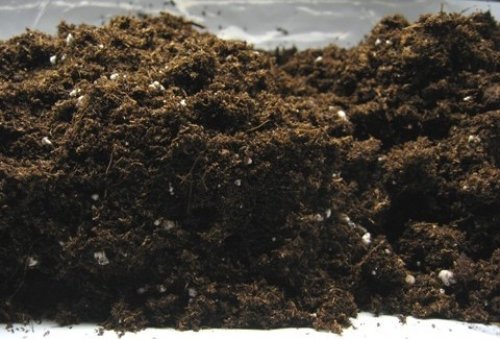

Ordinary soil for indoor plants is quite suitable for cms.
- Oxalis should be transplanted into new soil together with an earthen lump of old soil without damaging the roots. To do this, you can leave the plant without watering for a while. The earth ball will dry out and easily come out of the pot.
Chemical composition
Oxalis is rich in vitamins and valuable natural substances and serves as the basis for a number of traditional medicine recipes. The leaves and aerial parts of the plant contain:
- flavonoids (quercetin, glucosylisovitexin);
- vitamins A, C, K, B9 (folic acid), P (rutin);
- carotenoids (100 mg per 100 g of foliage);
- oxalic, succinic, citric, malic, fumaric acids;
The herb is not used in official pharmacology, but it is used in alternative medicine and homeopathy.
Syn .: hare cabbage, borshchivka, hare oxalis, cuckoo clover, etc.
A herbaceous plant, it is distinguished by trifoliate leaves, similar to those of clover leaves, but with a sour taste and single, inconspicuous flowers. Oxalis ordinary is used as a choleretic, antiseptic, strengthening agent.
experts
Flower formula
Sourwood flower formula: ♀♂ * CH5L5T10P (5).
In medicine
Oxalis is not a pharmacopoeial plant and is not used in official domestic medicine, but it is popular in folk medicine, homeopathy and medicine in some countries.
In homeopathy, the essence from this plant is used for dyspepsia, fainting conditions, hypoacid gastritis and liver diseases. In Caucasian medical practice, sour cherry (dried leaves) is used as a detoxifying drug for intoxication with mercury and arsenic, locally for therapy, compresses for orchitis, paralysis. According to the recommendations of nutritionists, acid is used in its raw form in the treatment of vitamin deficiencies, hypoacid gastritis and anorexia.
Contraindications and side effects
The use of acid for the prevention and treatment of various diseases is permissible if a person has no contraindications to the use of funds based on this plant. In severe diseases of the kidneys, liver, oxaluria, urolithiasis, poor blood clotting, arthritis, a tendency to seizures, means based on acid is not recommended. Long-term use of the plant can cause irritation of the walls of the urinary tract and kidneys due to the rather high percentage of oxalic acid in the chemical composition of acid.
At home
Oxalis ordinary has long been used as a natural dye for dyeing wool and other types of fabric. The sap of the plant removes ink stains and rust. The people knew that if the leaves of the sorrel were curled, it was before the rain or with a gusty wind. This kind of weather indicator was used by tourists. Oxalis is an excellent melliferous plant. Often the plant is considered decorative. Oxalis is recognized in floriculture. As the plants grow, they form a beautiful carpet. Often, a plant with a sour taste was used instead of vinegar, in the preparation of kvass, cabbage soup.
It should be remembered that oxalis is a poisonous plant. There have been cases that animals ate the grass of sour grass during grazing, and such meals, especially for sheep, ended in poisoning, up to death. The milk of cows that ate sour grass quickly curdled.
Classification
Common oxalis (Latin Oxalis acetosella) is a herbaceous perennial plant, a species of the numerous genus Oxalis. 6 species are known in the native flora. The genus Kislitsa belongs to the Oxalidaceae family and unites more than 800 species.
Botanical description
Oxalis ordinary is a perennial herb, reaching a height of 5-10 cm. The rhizome is thin, creeping, covered with scaly, reddish, fleshy leaves. The roots of the plant are infected with mycophycete fungi, the hyphae of which form vesicles and branches inside the cells of the root cortex. Shortened shoots. Leaves on long stalks, trifoliate, resembling the shape of clover leaves.With the onset of unfavorable conditions, rainy weather or night time, the leaves droop, folding as a result of turgor changes in the cells. Oxalis is a plant whose green leaves can be found even under the snow in winter. The leaves contain oxalic acid, which gives them a sour taste. In May - early June, the plant enters the flowering period.
Oxalis flowers are solitary, actinomorphic, with a faint odor. Placed on elongated, up to 10 cm, axillary peduncles. Bracts are small, located above the middle of the peduncle itself. The calyx is almost three times shorter than the corolla, and consists of 5 lanceolate, purple sepals. Corolla consists of 5 white or pinkish-purple petals with veins of pink or purple color, a yellow spot is visible at the base. There are ten stamens, the inner ones are twice as long as the outer ones. Pollination of acid wood has its own characteristics, which is associated with the taiga type of flora. Plants develop open (chasmogamous) and closed (cleistogamous) flowers. In the former, the stigmas significantly exceed the height of the anthers, which makes self-pollination impossible. Insects help to pollinate the flowers. In closed flowers, pollen grows inside low anthers. The flowers themselves are tiny, inconspicuous, practically without petals, which is an adaptation to the dark coniferous taiga. The plant is poisonous. Sourwood flower formula: ♀♂ * CH5L5T10P (5).
The fruit of the sorrel is a five-celled, loculicidal, light brown capsule, up to 1 centimeter long. Small numerous seeds of sour cherry are thrown out of the fruit for a considerable distance, and are also spread by ants.
Spread
Representatives of the genus Oxalis are mainly distributed in South Africa and South America. Oxalis ordinary is found practically throughout the entire European territory, in North America, in the Caucasus, in Turkey, Mongolia, China, in Eastern and Western Siberia, in the Far East. Oxalis is easy to find in spruce and coniferous forests: its thickets are preferred by wet forests, the so-called oxalis forests. Also, thickets of acid wood are found near forest reservoirs and streams.
Regions of distribution on the map of Russia.
Procurement of raw materials
For medicinal purposes, the herb is harvested from the sorrel (stems, flowers, leaves) or foliage separately during the flowering period (from April to May). Dried under a canopy in well-ventilated rooms, or in special dryers at a temperature of 45-50 ° C. The dried raw materials are crushed into small pieces. Store no more than 1 year in paper packages.
Chemical composition
The chemical composition of the common sour acid contains vitamins (ascorbic acid, vitamin A), carotenoids, tocopherols, phenolic acids, rutin, benzoquinone embelin. In the aerial part of the grass there are flavonoids (quercetin, glucosylizitexin), organic acids were found in the leaves (oxalic, succinic, malic, tartaric, fumaric, citric, tricarballyl). Oxalic acid and calcium oxalate give the plant a sour taste. 100 g of sour sour foliage contains 92 mg of ascorbic acid, as well as 100 mg of carotene. In young leaves, it is close to 0.07% of vitamin C, while in autumn it is about 0.15%.
Pharmacological properties
The pharmacological action of acid is due to the large percentage of organic acids in the chemical composition. Citric, succinic and oxalic acids are involved in the tricarboxylic acid cycle, which takes place in the mitochondrial matrix of cells. Succinic acid is considered the main substance for the development of pharmacological drugs - hepatoprotectors. Means based on acidic acid enhance the separation of bile and urine, regulate the digestive process, and increase the acidity of gastric secretions.
Application in traditional medicine
Knowing about the medicinal properties of acid, Bulgarian healers use the plant as a diuretic, choleretic, regulating, strengthening agent. Since ancient times, Russian healers have used oxalic acid for uterine bleeding, menstrual pain, diathesis and as a strengthening agent for the cardiovascular system.
The plant is used both fresh and in the form of dried medicinal raw materials (dried aerial part of the acid plant). Fresh juice from the plant helps to cleanse the body of harmful toxins and toxins, in particular from heavy metals, thereby exerting an antitumor effect. Fresh juice of hare cabbage is recommended for disorders in the digestive tract, diarrhea, indicated for diseases of the oral cavity, stomatitis. The gruel from the fresh leaves of the acid plant perfectly heals purulent wounds, skin areas affected by scrofula, since the juice has bactericidal, anti-inflammatory properties. The aerial part of the plant in its raw form is suitable for the prevention and treatment of hypo- and avitaminosis, it is indicated for hypoacid gastritis, anorexia.
Alcoholic tincture of acid is used internally for liver diseases, stomach cramps, urinary and gall bladder, scurvy, jaundice, enuresis. Outwardly, it is used to quickly heal wounds, ulcers, boils. Medicinal decoctions of acidic water on water are effective for tuberculous lesions of the lymph nodes, stomach cancer, heart neurosis, and are also indicated for the prevention of atherosclerosis. In addition, a decoction from this plant is an effective anthelmintic agent for adults and children. A broth of sour milk in milk has hemostatic and diuretic properties, this remedy is especially helpful for colds. The sap of the plant, diluted with water, is used to eliminate bad breath.
Historical reference
They have known about the beneficial properties of sour for a long time. Healers used the aerial part of the plant for scurvy; they treated ulcers and wounds with a powder of crushed raw materials. They knew that oxalis served as a good antidote for poisoning with mercury compounds. Often, decoctions of this plant replaced tea, but the drink was especially sour. According to legend, the pilgrims, setting off on a long journey, did not forget to take with them a sour. She quenched thirst, hunger, relieved pain from fatigue. In Europe, oxalis has long been considered the flower of happiness. “Clover of Happiness” is its name in European countries. There is an interesting belief: if a plant (cultivated species - four-leaved oxalis) changes its owner on the last day of the year, then there will definitely be good luck in the house. Synonyms for the name "kislitsa": hare sour cabbage, borshchivka, hare sour, cuckoo clover, hallelujah grass, hairy, sparrow acid, didil, hare sour, hare sour, hare salt, hare grass, hare sorrel, hare sorrel, alum, sour alum grass, sorrel sorrel, sour sorrel, sour sorrel, sour sorrel, blooming sour cherry, orobinets, saltwort, sour shamrock, fragrant sorrel, small sorrel, goose sorrel, Trotsky's sorrel.
Literature
1. Big encyclopedia of traditional medicine. - M .: OLMA Media Group, 2007 .-- 1040 p.
2. Utkin A. I. Big Russian encyclopedia. - 1995 .-- 445 p.
There are about 800 species of oxalis, which are distributed mainly in South Africa, Central and South America. Russia is characterized by oxalis ordinary
, or
hare cabbage
- a small stemless plant, forming in places a continuous cover in shady spruce forests. Leaves have the ability to fold at night, in bad weather, under very strong light and mechanical touch.
In the sorrel, the leaf is similar to the leaf of a clover, but with a clear notch at the end of each of the three leaves. In our forests, sour acid cannot be confused with anything. Sometimes oxalis completely cover the soil in the forest. Oxalis usually forms dense thickets, and often over a large area.We see such thickets most often in a coniferous forest - spruce or pine forest.
We have only 5 species of oxalis, and even then three of them are introduced by humans, 2 species from North America and 1 from South Africa.
Oxalis leaves, as a rule, do not overwinter. Only a few of them come out green from under the snow. In early spring, you will not see sorrel thickets in the forest. But then the growth of young leaves begins, the soil is covered with delicate, light greens of a slightly yellowish hue. At first, the thickets of acid wood have a completely different look than in summer, their color is almost salad.
In the spring, not only young leaves appear at the sorrel, but also flowers, small, white, wide open. Flowering occurs in mid-spring, at about the same time as blueberries. At this time, there are still few flowering plants in the coniferous forest. The thickets of acid wood always attract attention during the flowering period: against the light green background of young leaves covering the soil, you can see many small white corollas. There are a myriad of them here. Fragile white flowers seem to be scattered throughout the forest by someone's generous hand.
From the creeping rhizome, characteristic trifoliate leaves on long petioles and flowers on the same pedicels extend upward. The petioles and pedicels are very similar: they are about the same length and thickness, but the pedicels have a slight swelling in the middle.
The flowers of the sorrel are quite graceful. Each of them has five petals pointing in different directions. Having examined carefully a single flower, you can see that the white petals have a peculiar pattern of very thin crimson-purple veins. This makes the corolla of the flower appear slightly pinkish. There is a yellow spot at the base of each petal, so the center of the flower appears bright yellow. The rest of the details of the structure of the flower can be seen only with a magnifying glass. With an increase, it is clearly seen that there are 10 stamens in a flower: five are short and five are long. One pistil, but its ovary carries five filamentous processes at the apex with a thickening at the end. These are columns with stigmas. To complete the "portrait" of a flower, we must add that it has five more sepals.
After flowering, the petals of the flower fall off, and the ovary of the pistil grows and turns into a small greenish fruit-box almost spherical in shape. The fruit is located at the end of a thin stem, in the same place where the flower used to be. It ripens only in the middle of summer. This ball is slightly larger than a hemp seed.
A small, nondescript fruit has, however, one very interesting property: it is capable of, as it were, explode when touched. Try to find some fruits in the thickets of sour wood. Without taking them off the plant, lightly squeeze with two fingers first one of them, then the other, the third. If there is at least one ripe fruit among them, from which the seeds have not yet spilled out, a surprise awaits you. Touching such a ball, you will feel a sharp jolt, as if a microscopic grenade had exploded in your fingers. This fruit "shot" its seeds.
However, to be precise, I must say that the fruit does not "shoot" at all. Oddly enough, but he does not take any part in the scattering of seeds and remains completely passive. The seeds fly out under the action of the force contained in themselves (there is a special device on the side of the seed that acts as a repulsive spring).
When "shot" from the acid fruit, several small reddish seeds are thrown out. They have good germination and give rise to young plants. Oxalis is one of the few forest grasses that reproduce well by seeds. Its shoots sometimes appear in large numbers in spring.
Oxalis leaves also have interesting properties. As already mentioned, leaf slices are capable of folding along and drooping. This happens, for example, before the onset of inclement weather. Leaves are folded overnight. However, leaf dropping can also be induced artificially by lightly hitting them.Only their movements will be rather slow, imperceptible to the eye. The leaves will drop in a few minutes. It is best to do this in the spring, when young, light green foliage has just appeared on the acid.
If you chew the leaves of sour, you can feel the sour taste, like from sorrel. This is where the name of the plant comes from - "oxalis". Even more aptly, the German name for this little herb is sour clover. The leaves of the plant owe their sour taste to the presence of oxalic acid salts. They are also rich in vitamin C and are quite edible even raw. You can also make soups, sauces, salads from them. In a word, oxalis can serve as a good substitute for ordinary sorrel. But, like all plants containing oxalic acid, oxalis should be used with caution.
The sour leaves of this plant have an antiscorbutic, refreshing, diuretic effect. In folk medicine, they are used for scurvy, febrile conditions, in the form of tea - for urinary incontinence. The crushed leaves are applied to the festering wounds.
Recently, in humid and semi-dark places, introduced from North America began to appear quite abundantly oxalis key
... She has the same leaves, but the flowers are yellow. The most noticeable difference is the erect, thin, branched stem.
Common oxalis (Oxalis acetosella L.)
Description of appearance:
Flowers: Flowers are solitary, on peduncles exceeding the leaves. Calyx 4-4.5 cm, almost four times shorter than the corolla. There are five petals, they are lanceolate, ciliate at the edges, white, with purple veins, purple at the top (rarely the petals are purple-pinkish or purple). Leaves: Leaves are basal, trifoliate, with long petioles, petioles without webbed border; leaflets obverse-heart-shaped, up to 2.5 cm long and up to 3 cm wide, folding lengthwise, thin, with sparse hairs. Height: 5-10 cm. Stem: Stemless plant. Root: With a creeping, rounded rhizome covered with pink scales. Fruit: Boll up to 1 cm long, ovoid, pointed, wrinkled, light brown, glabrous. When ripe, the capsules crack and the seeds are scattered; Seeds are scattered mainly by ants.
Flowering and fruiting times:
Blooms in May-June; fruits ripen in July-August.
Life Expectancy:
Perennial.
Habitat:
Oxalis grows in damp forests, mainly dark coniferous, often dominates and forms a continuous cover.
Prevalence:
Distributed in the northern hemisphere in temperate regions. In Russia, it is found in the forest zone of the European part, in the Ciscaucasia, Siberia and the Far East. In Central Russia, it grows in all areas of the non-chernozem belt, rarely to the south.
Addition:
It propagates vegetatively, by growth and branching of rhizomes, and by seed. In many regions of Central Russia, a plant of North American origin Erectus, or key (Oxalis stricta L.), widely distributed in Eurasia, was found. As an invasive plant, in some places in Central Russia, Carob Sour (Oxalis corniculata L.) was also found, with leaflets usually 10-20 mm long, petioles with a membranous border.
Oxalis ordinary is a conspicuous forest plant. Features of the common sour sorrel, its photo and description. How is sour acid used?
Hello dear reader!
In childhood, we called this forest grass "hare cabbage". I still don't know why. "Hare" is even more or less clear. But why cabbage?
Oxide ordinary in moderate quantities is edible and even useful. It is used by traditional medicine to treat a number of diseases. Perceptible flowers and peculiar leaves of the common oxalis adorn the forest very much, especially in late May - early June. Use the plant, like its "foreign" relatives, gardeners.
What is sick?
Compared to other representatives of the flora, it is quite resistant to all kinds of diseases and pests. But only if the plant has been properly cared for. Insufficient or, conversely, abundant watering, lack of fertilizing and sunlight lead to the fact that the plant weakens. Like bees on honey, aphids flock to it, scabbards and red mites appear. Let's figure out how to deal with this motley company.
- Often, aphids are affected by carob oxalis and straight oxalis. At home, they make a soap solution - for 2 glasses of water, take 2 teaspoons of liquid soap.
- A special preparation Actellik will help get rid of spider mites.
- Attacked by the shield? We carefully remove the insects with our hands and spray with Aktara.
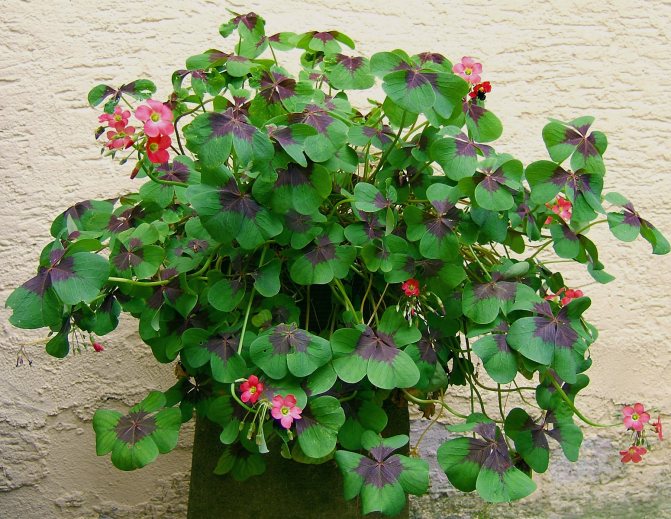

Ocalis in a pot
If necessary, repeat spraying after 7 days. Remember the precautions. Spray only outdoors, always wearing gloves. After treatment with soapy water, after 2-3 hours it must be washed off with clean water.
The most common diseases are gray rot and fusarium. As a rule, they arise due to stagnant liquid, excessive watering, or lack of a drainage layer. Both diseases can be cured, but only at the initial stage - Fundazol will help you.
The most common types of Hare cabbage
Sedum Ordinary or Oxalis Ordinary
The most common perennial species that grows in Europe, the Caucasus, the Far East, Mongolia and Japan. It also has other names - Purple and Skripun.
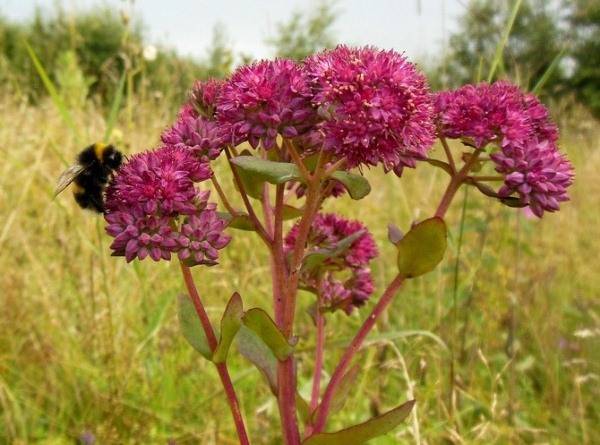

Sedum purple
The plant of this species reaches a height of 80 centimeters.... It has strong, thick stems, fleshy light green leaves and a multi-flowered inflorescence of lilac and purple hues.
Kislitsa Lesnaya
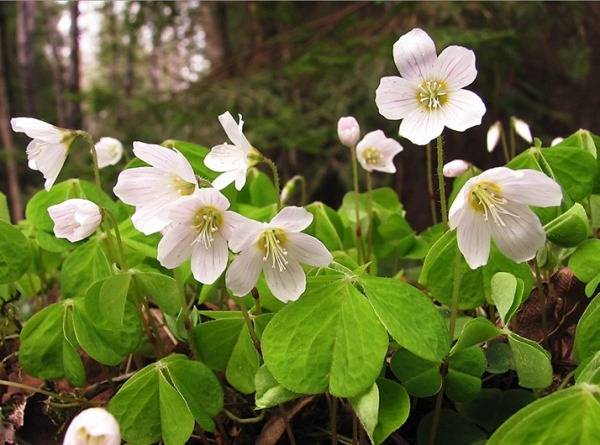

Kislitsa Lesnaya
The external structure coincides with ordinary acid. The only difference between this species is that Lesnaya Kislitsa is a wild plant that can be seen naturally in the forest.... Has white flowers. A wild-growing flower tolerates frost worse than decorative varieties.
Sedum Caustic
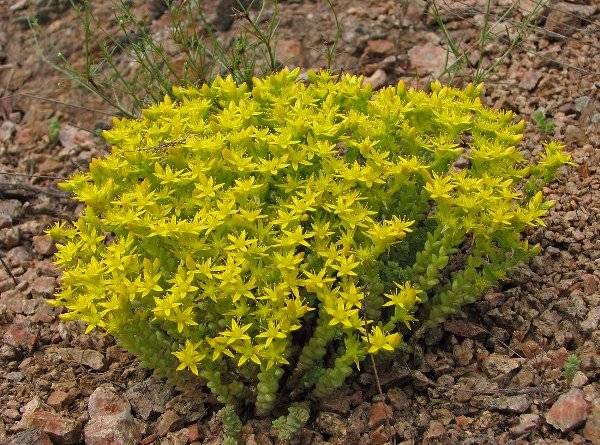

Sedum Caustic
Grows up to 10 centimeters tall... The leaves are small, diamond-shaped. Inflorescences are yellow. One of the most unpretentious and hardy types of sedum.
Stonecrop Kamchatka
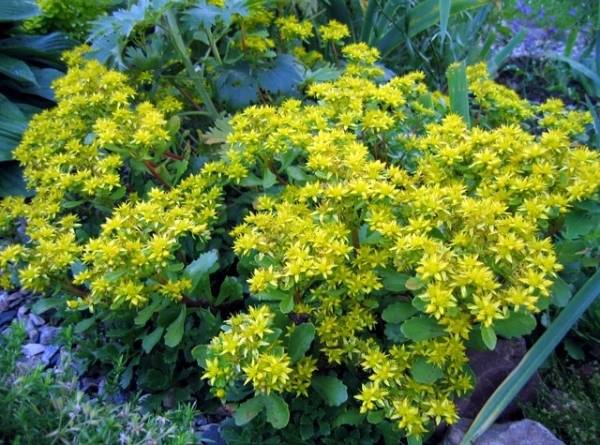

Stonecrop Kamchatka (sedum)
Height reaches 25 centimeters. It has dense stems, flat leaves up to 2 centimeters. Blooms profusely in mid-summer with yellow-orange flowers... It got its name because of its wide distribution in Kamchatka.
Sedum Poplar-leaved
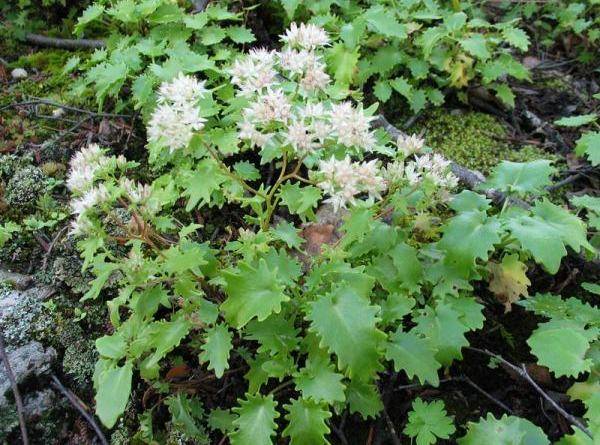

Sedum Poplar-leaved
Outwardly it resembles a small shrub, up to 30 centimeters in height. Grows mainly in Siberia... The leaves are diamond-shaped, small. Inflorescences are pale pink or cream in color.
Tubers or bulbs
The popular methods of reproduction of Oxalis include bulbs and tubers, which overgrow the culture during the growing season. Separation from the mother culture and planting in a separate container are carried out.
With the arrival of spring, healthy tubers are chosen, planted in a common pot. It is deepened by 1 cm, sprinkled on top with a 1 cm layer of earth. Until the tubers take root, it is required to maintain a temperature of + 8 ... + 11 ° C and periodically moisten the soil.
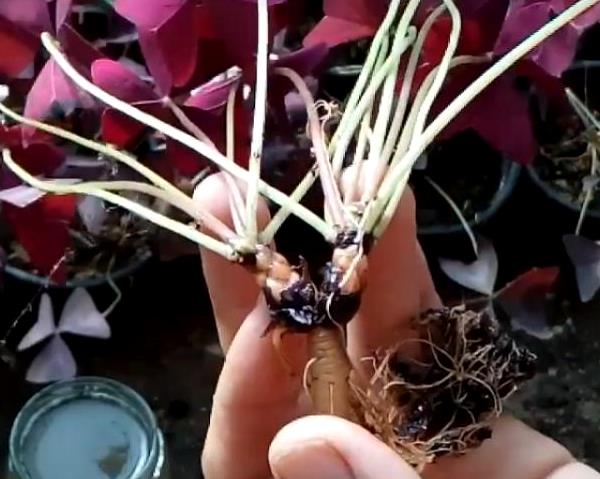

Tuber propagation
After a month, the temperature is increased. Before planting, the tubers are disinfected in a solution of potassium permanganate.
Reproduction
Warty euonymus (Euonymus verrucosus) - description of the plant
Rabbit cabbage reproduces in different ways. For example:
- seeds;
- tubers, bulbs;
- cuttings (petioles, leaves).
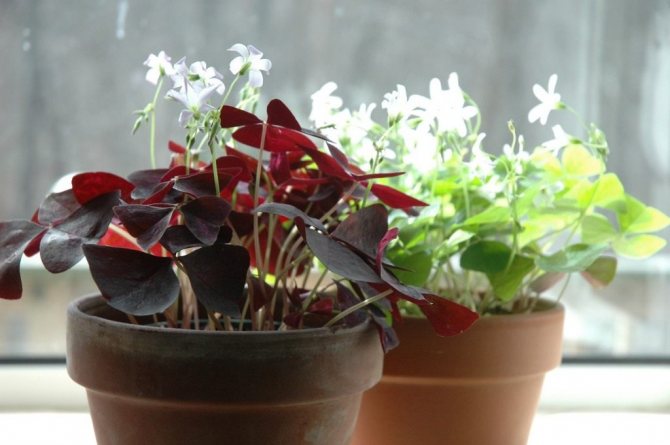

Different types of acid on the windowsill
Planting seeds, tubers in open ground should not be earlier than the onset of May. Petioles, leaves are first placed in a glass of water or in a pot of soil mixture. Experiments with propagation by cuttings are best carried out in an apartment.
Vegetable raw materials
The plant has a pleasant sour taste, but in large quantities it is slightly toxic, can cause irritation of the kidneys and urinary tract. You can make a vitamin drink from fresh leaves crushed with sugar. When mixed with cheese, the leaves are suitable for salads, they are also eaten as a seasoning for egg dishes and soups. Infusion of greens is sometimes used as a surrogate for tea. However, long-term internal use of this plant can lead to kidney disease.
Oxalis ordinary was used in the dyeing business.
When grazing animals in places with a large amount of oxalis (especially in early spring, when there is little other food), there are cases of dangerous poisoning (in particular, in sheep), often with a fatal outcome.
Honey plant, but the collection of honey is small.
Sometimes it is used as an ornamental plant. Prefers moist, humus-rich soil. It is better to choose a shady plot for growing this plant. Oxalis ordinary reproduces by seeds and dividing the bush. As it grows, it forms a beautiful carpet.
Red currant pests
Diseases and treatment of acid sour will be discussed below, and now we will pay attention to the pests most often found on the bushes of the plant, and how to deal with them. When parasites appear, you do not need to immediately use chemical remedies. If there are few of them, then they can be collected by hand and destroyed. Pesticides are recommended to be used only when absolutely necessary. Compliance with the rules of agricultural technology is the key to a good harvest and protection of the plant from diseases. Bushes must be trimmed (how to trim currants is described below), damaged parts burned, and autumn digging must be carried out.
Red currant pests:
- Currant goldfish feeds on the core of sour cherry branches. To combat it, it is recommended to cut and burn shoots, and it is also necessary to carefully select the planting material.
- The spider mite damages the leaves of the red currant. For destruction immediately after flowering, the bushes are treated with "Fitoverm" at the rate of two milliliters per one liter of water.
- Kidney currant moth damages the kidneys and fruits of the sour berry. When the bushes are infected, it is necessary to cut the damaged shoots at the root and burn them.
- Gooseberry moth is a fairly common pest that affects currant berries. If early colored berries are found, long before ripening, they should be collected and destroyed. It is also recommended to dig up the soil around the bush in the autumn.
- The pale-footed sawfly, as a rule, damages the leaves of the sorrel. In spring and summer, it is necessary to remove the larvae from the leaves of the shrub, and also spray it with a decoction of tobacco and wormwood.
- The gooseberry moth eats the leaf blade, as well as the veins of the bushes. To combat it, you should use a tincture of pharmacy chamomile, a decoction of makhorka and tobacco.
- Currant glass beetle is one of the most dangerous pests. It damages the core of the branches, as a result of which they dry out and die off. To avoid this, it is necessary to prune the bushes in early spring, while the buds are sleeping. In addition, the soil and bushes can be treated with Fitoverm.
- The shoot aphid is also very common. To combat this pest, the bushes should be sprayed with a ten percent solution of "Karbofos" until the buds dissolve.
Dormant period
At the end of summer, the leaves of the sorrel turn yellow and fall off - the flower goes into a state of dormancy for 1-2 months, sometimes for 3.
At this time it is necessary:
- reduce watering to a minimum (sometimes it is advised not to water at all);
- set the temperature regime 12-18˚С;
- put in the shade;
- do not feed;
- remove dried shoots (they are easily pulled out of the soil).
After that, a new growth cycle will begin. Kislitsa can spend a lot of time at rest, but it is almost impossible to “kill” it. As soon as the bulb is placed in favorable conditions, it will immediately grow.
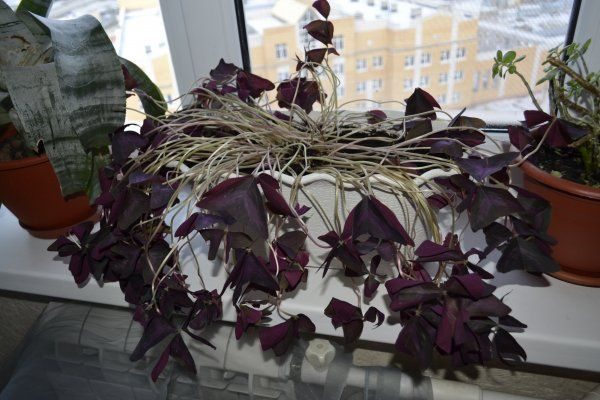

Oxalis during dormancy
Bloom
The uniqueness of this culture lies in the fact that it is possible to admire the flower all year round, providing it with good lighting. To do this, after the end of the stage of its natural flowering, it is necessary to significantly reduce watering, and also so that oxalis (oxalis) must be in a cold room. These processes will cause a forced state of rest. At the end of the month, the tubers or flower bulbs will need to be transplanted into another soil substrate, return to watering, and put the flowerpot under sufficient sunlight, but diffused light. Flowering will be repeated after 30-40 days.
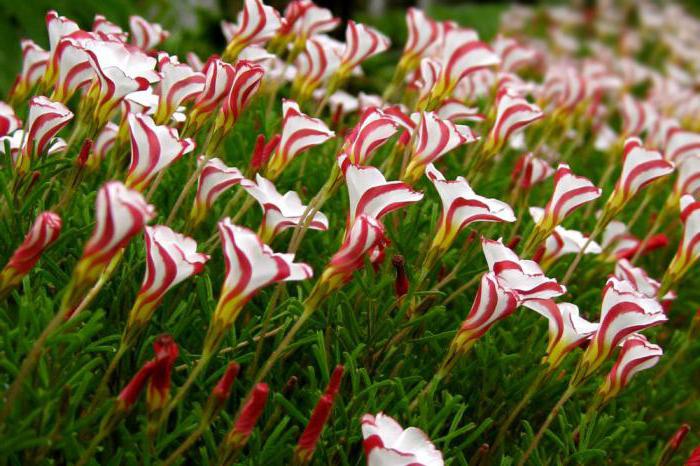

Botanical description [edit | edit code]
Oxalis ordinary - winter-green [4] squat stemless herbaceous perennial plant, reaches a height of 5-12 cm.
The rhizome is thin, creeping. The roots of the oxalis are infected with fungi. The hyphae of the phycomycete fungus penetrate into the cells of the root cortex (endotrophic mycorrhiza) and form there tree-like branches (arbuscules) or bubble-like swellings (vesicles). In subepidermal cells, the body of the fungus (mycelium) remains alive for a long time, and in the layer of digesting cells (phagocytes), arbuscules are digested (tamniscophagia) [3].
Leaves are long-petiolate, trifoliate, soft. Leaflets are obverse-heart-shaped, whole-edged. Before nightfall or inclement weather, the leaves fold and wilt. They taste sour, as they contain oxalic acid salts. The Russian botanist A. F. Batalin in 1872, in his dissertation "On the Effect of Light on the Formation of the Form of Plants", was the first to point out the ability of the common sorrel to lower leaves in strong light and from mechanical irritation: cells of the pads of the joints of the leaves [3].
It blooms in late spring - early summer (May - June) [5]. The flowers are solitary, on long stalks, white with pink-violet veins and a yellow spot at the base. Sepals are oval, obtuse, glabrous above, pubescent along the edge. Pollination of the flowers of the sorrel, associated with the taiga type of vegetation, is a special case. The flowers are monomorphic, but along with open (chasmogamous) flowers, there are closed (cleistogamous) flowers. In chasmogamous flowers, stigmas and pollen ripen at the same time, but they cannot come into contact, since the stigmas are ⅓ higher than the height of the anthers. Insects contribute to self-pollination of flowers. In the event that insects accidentally cross-pollinate, seeds are set. The kleistogamous flowers are very small (about 3 mm) in comparison with the chasmogamous ones (about 2 cm in diameter) and look like buds. They are usually hidden in the leaf litter and appear only when the seeds of chasmogamous flowers begin to ripen. In cleistogamous flowers, the petals are simplified to tiny scales, the columns are short, the anthers do not open, and the pollen grows inside them and the pollen tubes penetrate through the anther wall and are oriented towards the stigma. Kleistogamy in common oxalis is the most important adaptation to the conditions of the dark coniferous taiga. Strong shading and increased moisture causes an increase in the number of cleistogamous flowers and a decrease in chasmogamous ones [3].
The fruit is a five-celled loculicidal capsule; opened by breaking the nests. After ripening, the seeds are thrown out of the capsule for a long distance. Seeds are spread by ants (myrmecochoria)

